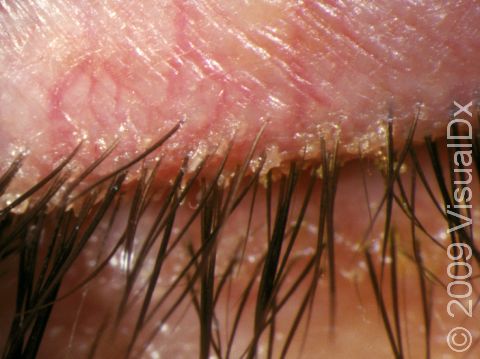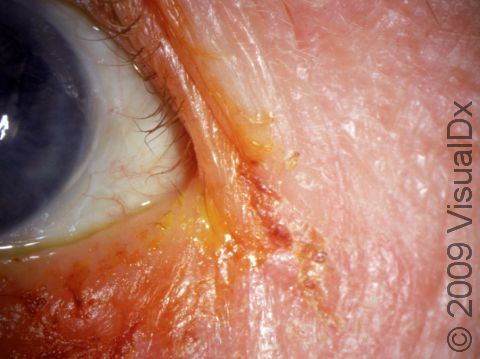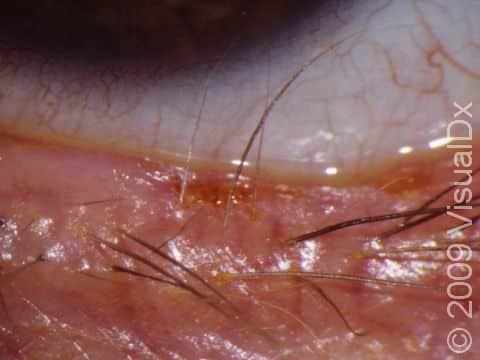Who's At Risk?
Although blepharitis is common, people who have seborrheic dermatitis, dry skin, rosacea, allergic contact dermatitis, or those sensitive to chemical irritants or cosmetics are especially likely to have blepharitis. Blepharitis is not contagious.
Signs & Symptoms
Typically, the rims of the eyelids are inflamed or reddish, often with crusty debris in the lashes, in the corners of the eyes, or on the lid edges. There may also be swelling. Burning, tearing, sensitivity to light, a gritty feeling in the eyes, sticking together of the eyelids, discharge from the eyes, pain, blurry vision, and eye redness may all occur with blepharitis. Blepharitis may affect only one eye, but usually both eyes are involved.
Self-Care Guidelines
To help improve blepharitis:
- Apply warm, moist compresses to the eyes. You can repeat this for 5 minutes 2-4 times daily.
- Clean the eyelids with plain water or a drop of diluted baby shampoo on a washcloth.
- Make sure to thoroughly remove all makeup daily.
- Avoid any irritants that may be causing your blepharitis.
- Avoid rubbing the eyes, which may cause more irritation.
- Keep any underlying conditions controlled (eg, rosacea).
Treatments
Your medical professional will help treat any underlying conditions causing the blepharitis. They may also have recommendations for eyelid hygiene.
Depending on the severity of the blepharitis, your medical professional may recommend artificial tears, antibiotic, and/or steroid drops or ointment.
Visit Urgency
See a medical professional if you have blepharitis symptoms and:
- Your pain is increasing.
- There are any changes to your vision.
- The swelling is increasing.
- The eyelids become hot to the touch.
- The condition is not getting better within a week despite self-care.
- There is blistering and/or a rash on the eyelids.
- There is development of a lesion (bump or growth) on the eyelid that does not improve with warm compresses.
Trusted Links
References
Duncan JL, Parikh NB, Seitzman GD. Disorders of the lids & lacrimal apparatus. In: Papadakis MA, McPhee SJ, Rabow MW, McQuaid KR, Gandhi M, eds. Current Medical Diagnosis & Treatment 2024. McGraw Hill; 2024.
Horton JC. Disorders of the eye. In: Loscalzo J, Fauci AS, Kasper DL, Hauser SL, Longo DL, Jameson JL, eds. Harrison’s Principles of Internal Medicine. 21st ed. McGraw Hill; 2022.
National Eye Institute. Blepharitis. NIH. https://www.nei.nih.gov/learn-about-eye-health/eye-conditions-and-diseases/blepharitis. Updated 2023 Nov 15. Accessed 2024 Jan 25.
Last modified on June 20th, 2024 at 7:33 am

Not sure what to look for?
Try our new Rash and Skin Condition Finder


